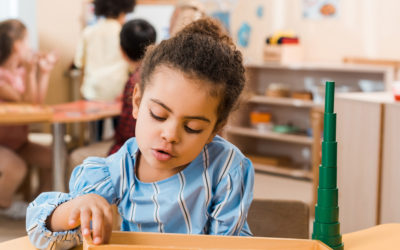Amidst concerns of the global COVID-19 pandemic, all of us are asked to practice social distancing. Social distancing is a term used to describe several precautionary measures recommended by the CDC to stop the fast and dangerous spread of the coronavirus. As schools and other public places are shut down, families may have no choice but to be home with their children when they’d usually be in school or other programming. This can be a challenge to adjust to. In this post, we’ll talk about social distancing with children on the spectrum and our best tips for this uncertain time.
What Does it Mean to Practice Social Distancing?
Social Distancing means avoiding direct physical contact with anyone not in your household. For some, it means working remotely from their home. For others, it means new precautions as they travel for work or even unemployment in more dire circumstances. For most children, schools are closed and classes are either virtual or not taking place at all. Whatever your situation, if you find yourself with extra time at home with your children on the autism spectrum, you may find some of the below tips for filling that time useful.
Build a Visual Schedule
Our main advice for maintaining consistency and structure at home is to build a visual schedule for your child. Maintaining structure is very important for many children on the spectrum as they thrive on routines. Making a schedule for time at home can make that time more enjoyable and beneficial for both parent and child. Create a list and gather materials for an array of activities you can plan before creating your schedule. Brainstorm and plan activities on some of the following:
- Educational/Academics: Work on any assignments available or focus on an online workbook to work the brain and retain any topics otherwise covered in school.
- Arts and Crafts: Take the time to let your child get creative with writing, drawing, painting or educational toys.
- Exercise: Make some space in the house for exercise and physical activities or take a walk around the neighborhood on a schedule.
- Routine Each Day: Have a wakeup time, get dressed, plan meals and mirror your child’s usual schedule as much as you can at home.
- Reading: Don’t neglect story time or time to practice reading skills. Now is a great time to revisit any favorite books and stories.
- Chores: Have your child pitch in around the house to teach them helpful independence skills.
- Recreational Time: not every moment of the day needs to be intentionally educational, schedule breaks and time for fun too.
Balance is the key when thinking of activities to fill your visual schedule. When you have these down, make your own visual schedule by assigning each task a photo or clip art that your child can recognize. There’s also plenty of free printables online like the ones here. Take time to review this schedule and make changes when necessary.
Make the Most of your Time Together
Though the circumstance may be less than ideal, more time with your child can be a good thing. Make the most of that extra time by making it quality time spent together. Do things you both enjoy and make the daily activities like cooking or cleaning something you can do together. Every moment counts.
Don’t Forget Alone Time
That being said, practicing self care for yourself is just as important. If possible, plan on having some time for yourself or split the work with others in the household. Keep track of activities you can do on your own. Keep your head clear and rest when you can to ensure you’re at your best for you and your family.
For more ABA and autism related news and tips visit our blog and follow us on Facebook, Instagram, YouTube, and Twitter! If you have questions regarding ABA therapy services or you’re interested in visiting one of our locations, don’t hesitate to reach out to us on our contact page. We’re always here to answer your questions and support your family’s needs as best as we can.



